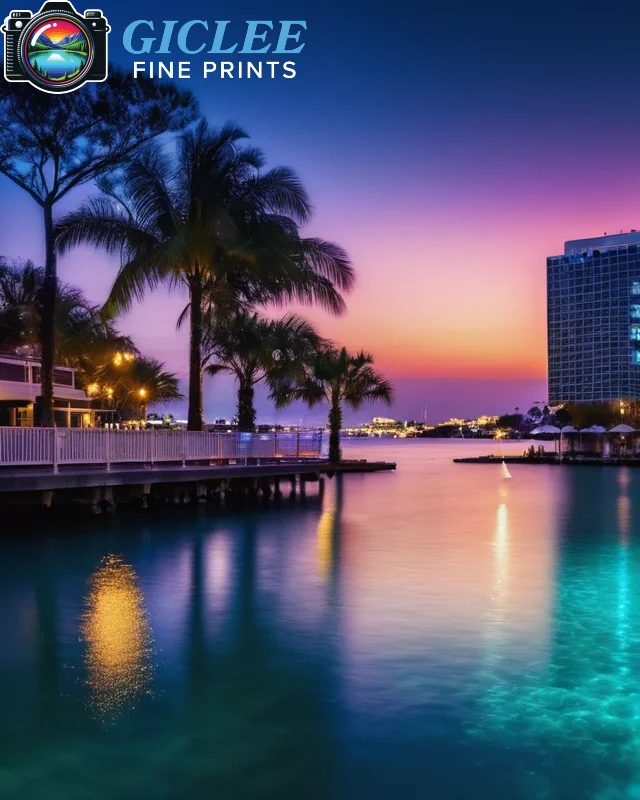
When it comes to producing stunning prints, choosing the right paper is just as important as selecting the perfect image or printing method. From canvas and fine art paper to metal prints and peel-and-stick wall art, each medium offers its own aesthetic and tactile qualities. However, understanding paper weights and thicknesses is especially critical when working with fine art papers. At Giclee Fine Prints, we believe that knowledge is power, and we’re here to help you navigate the world of paper weights and thickness to ensure your artwork looks its very best.
Why Paper Weight Matters
Paper weight refers to the density of the paper, typically measured in GSM (grams per square meter). A higher GSM generally indicates a heavier, thicker sheet. Why does this matter? Heavier paper often feels more substantial and premium, resists curling and bending better, and can influence how your image’s details and colors appear.
Key Reasons:
- Durability: Heavier paper can handle handling, framing, and long-term display without warping or tearing.
- Professional Feel: The heft of the paper adds to the perceived value of the print, making it suitable for galleries, exhibitions, and upscale retail environments.

Common Paper Weights and Their Uses
While many weights exist, common GSM ranges help guide your selection:
- 100–150 GSM: Lightweight paper, often used for posters or proofs. It’s cost-effective but less durable.
- 200–300 GSM: A mid-range weight providing a good balance between sturdiness and flexibility. Ideal for art prints that need a professional feel without being too heavy.
- 300 GSM and Above: Heavier fine art papers often start here. They’re thicker, more luxurious, and better at preserving the integrity of your image over time.
Paper Thickness vs. Weight
While weight and thickness often correlate, they’re not the same. Two papers with the same GSM can differ in thickness due to the fibers, coatings, and manufacturing processes used. Thickness—often measured in mils or millimeters—affects how the paper feels, how it can be framed, and how it handles ambient conditions.
Important Considerations:
- Feel and Handling: Thicker paper may be easier to handle without creasing or damaging it.
- Framing and Mounting: Thicker paper lies flat more easily, simplifying the framing process and ensuring a polished final presentation.

Choosing the Right Paper for Your Artwork
The right paper weight and thickness depend on the type of artwork and the desired outcome:
- Photography: Detailed photographs often benefit from heavier fine art papers (around 200–300 GSM) that can capture and display subtle tonal gradations.
- Illustrations and Watercolors: Thicker, textured papers (300 GSM or more) replicate the feel of traditional artist papers, maintaining the authenticity of hand-painted pieces.
- Mixed Media Prints: If you plan to add additional layers—like paint or pastel—onto your prints, opt for a heavier, textured paper that can handle the extra media without buckling.
Matching the Medium to Your Paper Choice
While paper selection is crucial, don’t forget to consider your overall printing medium and presentation. If you’re complementing your fine art paper prints with canvas or metal prints, ensure consistency in the overall look and feel:
- Canvas and Fine Art Paper: Combine a heavyweight, textured fine art paper with canvas prints for a cohesive, gallery-ready look.
- Metal Prints and Peel-and-Stick: If you’re showcasing modern photography or bold graphics, metal and peel-and-stick prints can be balanced with smoother, slightly lighter fine art papers for contrast.
Contact Us
Our address is: 3816 Pioneer Trail Ste #3, South Lake Tahoe, CA 96150
Email: Info@gicleefineprints.com
FAQs
Paper weight itself doesn’t directly impact color reproduction, but the paper’s coating, texture, and quality often do. Higher-quality, heavier papers typically have better coatings and improved color fidelity.
Yes. At Giclee Fine Prints, we can provide samples to help you compare weights, finishes, and textures, ensuring you’re confident in your selection.
Heavier, thicker papers tend to resist warping or curling in humid conditions, making them more stable for long-term display in varying environments.


